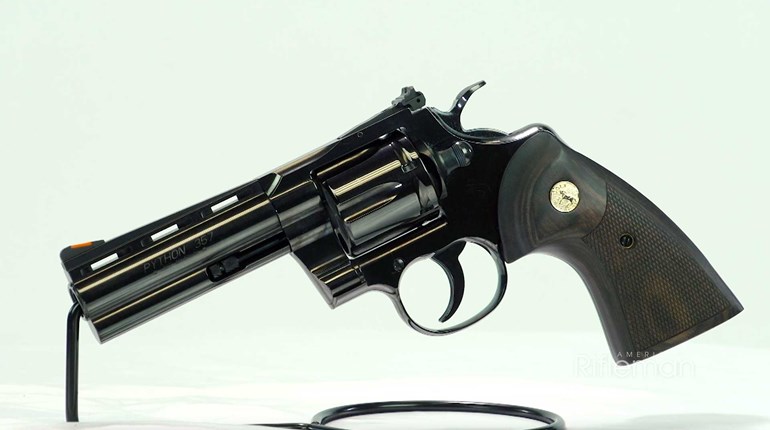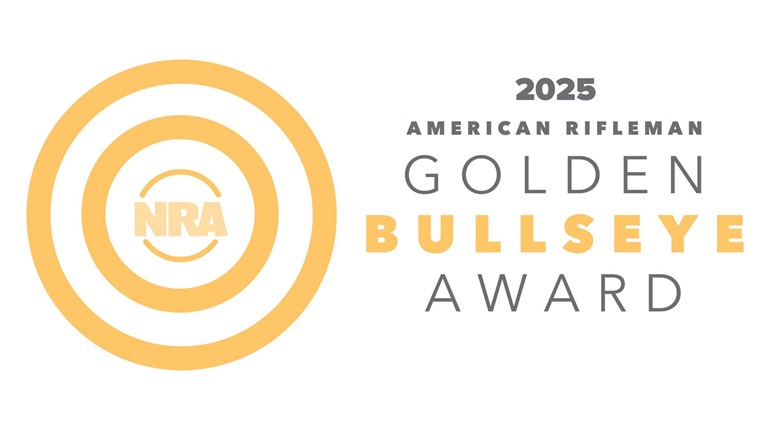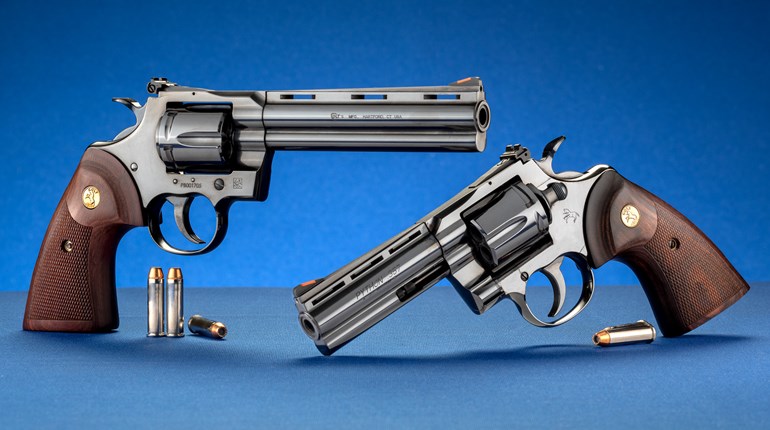
Is it my fault? Maybe. You see, two years ago when Colt introduced its new Python revolvers at a Gunsite media event, I was let in on a secret. After signing my life away in a non-disclosure agreement, I was told the next revolver would be an Anaconda chambered in .44 Mag. (it was) and, following that, a 2.5-inch-barreled Python.
“Whoa!” said I. “What you should do is produce a 3-inch Python. After all, it is the rarest and most collectible version of the Python and the barrel length most in demand by savvy revolver shooters. And, besides, I want one.”
Whether my pleading, cajoling and begging resulted in this newest Python or not, it is here now and in my sweaty paws. My precious …
Backing up a bit, I was impressed with the new Python. Offered in a 4.25- and a 6-inch version, these revolvers have a smooth, double-action trigger stroke due to an improved action. Unlike the Pythons of old, the new revolvers won’t go out of time and, while they look almost identical, are beefed up in critical areas. The ones we tested at Gunsite shot great, right out of the box, with no need for tweaking or action tuning. The Gunsite staff was impressed, and many of us obtained one. For the past two years we have observed “Python Fridays,” sporting our Pythons while teaching or wandering around the ranch.

Two versions of 3-inch-barreled, blued Pythons were produced during the 1980s, one by Colt as a small run for Lew Horton Distributors called the Combat Python, and another by a distributor that purchased 8-inch, .38 Spl. Target model Pythons from Colt, then converted them to 3-inch magnums. This latter revolver was marked California Combat. Since then, any of the ultra-scarce 3-inch Pythons are generally referred to as California Pythons, with the factory Lew Horton models being the most valuable to collectors.
Aside from their scarcity, other reasons revolver shooters covet 3-inch guns are their seeming supernatural ability to balance and point great, and the 3-inch barrel allows for a full-length extractor rod. The shorter rods on 2- and 2.5-inch revolvers are not long enough to positively extract empty cases, and having a 3-inch barrel solves this issue.
The new Pythons are stainless steel and nicely polished, almost looking like a nickel finish. The stocks are target style, feel good in the hand and do a good job of soaking up the energy of a hot .357 Mag. round, however they interfere with the use of some speedloaders. The front-sight blade is replaceable by means of a setscrew, and a bright-orange ramp, night-sight or a gold-bead blade can be obtained from Colt. Look for the ones for the Cobra models, as they’re the same. The rear sight is adjustable for windage and elevation and is a little strange, to my mind, having a tiny setscrew that needs to be loosened before windage adjustments can be made. It works fine and the sight stays put, but it’s unconventional.
At their essence, Pythons are target revolvers, and despite the abbreviated barrel, this one still has the large target hammer and sharply serrated trigger. While I can live with the hammer, for fast double-action work the trigger face should actually be smooth, allowing the finger to roll over the trigger.
The double-action trigger pull on my sample is good, if a bit heavy at 9.5 pounds on my electronic trigger scale. The single-action pull has a tiny bit of creep and breaks at 6 pounds. I’m thinking I’ll turn the revolver over to Gunsite’s gunsmith extraordinaire, Dave Fink, to have the trigger smoothed and the action tuned.
Taking the shorty Python to the range, I first ran it through the Gunsite School Drill, from 3 to 15 yards, with .38 Spl. ammunition, all shots fired double action, working from the holster. Following that, I fired double-action groups at 7 yards, standing, firing offhand with several brands of .38 Spl. and .357 Mag. ammunition.
This is quite a nice revolver. I’m very pleased the executives at Colt listened to me (um … I mean listened to its customers) and made the Python for which we’ve (I’ve) longed. Come next Python Friday, I’ll have the dilemma of which Python to wear. It’s a nice problem to have.







































